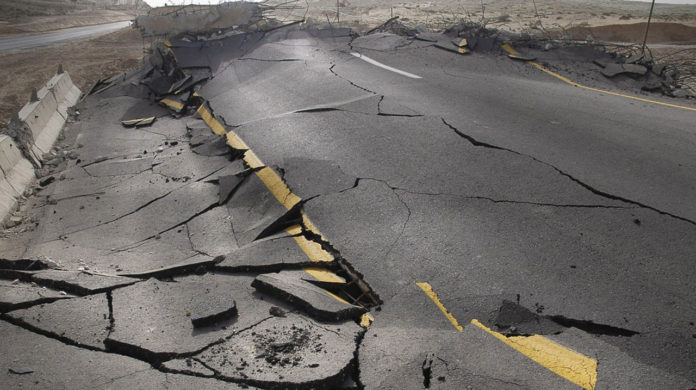Earthquakes are the result of the release of stress/strain that builds up as Earth’s tectonic plates move and grind against each other. Although some regions around the world are more prone to earthquakes than others, it is not possible to accurately predict exactly where or when earthquakes will occur.
Scientists from EPFL along with Weizmann Institute of Science in Israel, have made a step forward in assessing earthquake dynamics through a better understanding of how frictional slip – the relative motion of two bodies in contact under shear stress, such as tectonic plates – begins.
Fabian Barras, a doctoral assistant at EPFL’s Computational Solid Mechanics Laboratory (LSMS) during this research said, “We wanted to understand what happens when two bodies in frictional contact suddenly start moving following a gradual increase of the shear stress: the way they start sliding will determine the speed and extent of the movement and, potentially, the severity of an earthquake.”
“How frictional sliding begins between two bodies is not as uniform as it appears. Ultrafast cameras show that slip starts at a specific point and then spreads to the rest of the surface. These slip front dynamics is very similar to the way a crack propagates within a brittle material.”
“Although the physics of a crack and a slip front is not the same, they both propagate because of a drop in the material’s load-bearing capacity behind the rupture. Using the analogy with dynamic fracture, we studied the origin of the drop of frictional stress observed in the wake of a slip front when the interface starts to move.”
Scientists observed the concentration of stress at the slip front and used theoretical tools from the field of rupture dynamics to study the energy balance.
In contrast to the circumstance with a crack, friction keeps on dispersing vitality afterslip has begun. During an earthquake, just a piece of the accessible vitality is utilized to proliferate the rupture front, and the remainder is dissipated by friction, chiefly as heat. It is here that the specialists had the option to modify recently utilized models and accomplish a superior comprehension of how much frictional energy is involved with the engendering of the rupture front.
Scientists used high-performance computers to simulate seismic ruptures based on generic laws of friction, which reproduce the change in frictional force depending on the slip velocity measured between different types of materials. They then used dynamic rupture theory and applied it to friction. Doing this, they were able to assess laboratory experiments and ensure that their predictions were correct.
Barras said, “We were able to validate our predictions across a wide range of experimentally observed rupture velocities. The theoretical models we developed could, in the future, help us better understand why certain earthquakes in nature are fast and violent, while others propagate slowly and occur over longer periods.”
“Today, several promising technologies in the context of the energy transition – like deep geothermal energy – relies on underground fluid injection. It is important to have a better understanding of how those injections affect seismic activity. I hope to use the tools I developed during my Ph.D. to study that impact.”
Professor Jean-François Molinari, the head of EPFL’s Computational Solid Mechanics Laboratory, said, “This work shows how research developed in a civil engineering laboratory can have exciting implications for earthquake science and lead to cutting-edge publications in areas such as physics.”
Their work has been published in two complementary parts, in Physical Review X and Earth and Planetary Science Letters.
